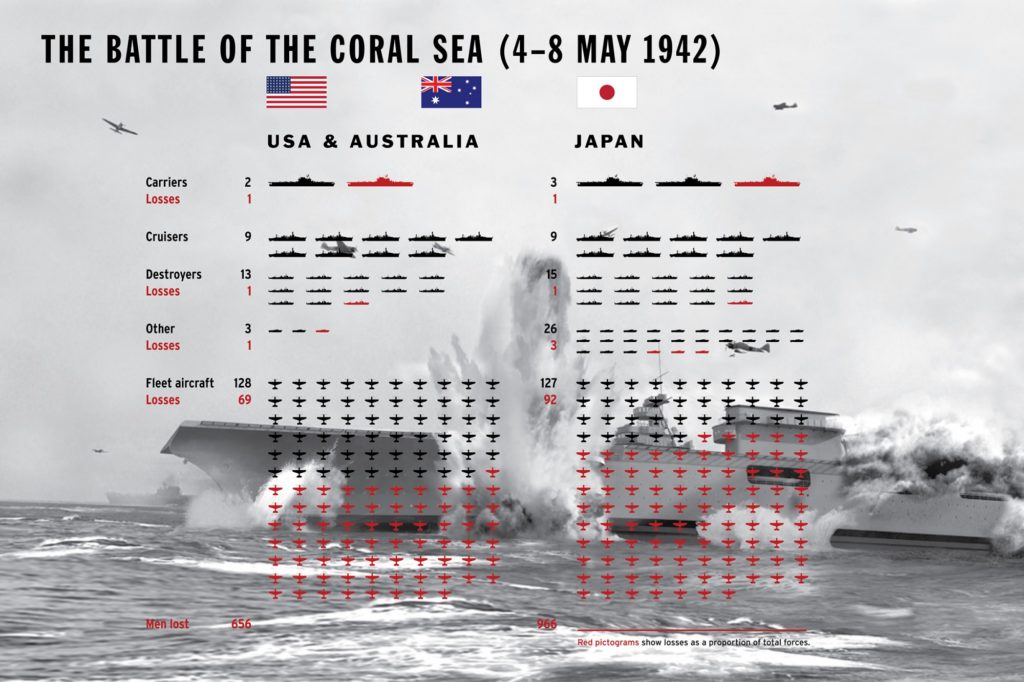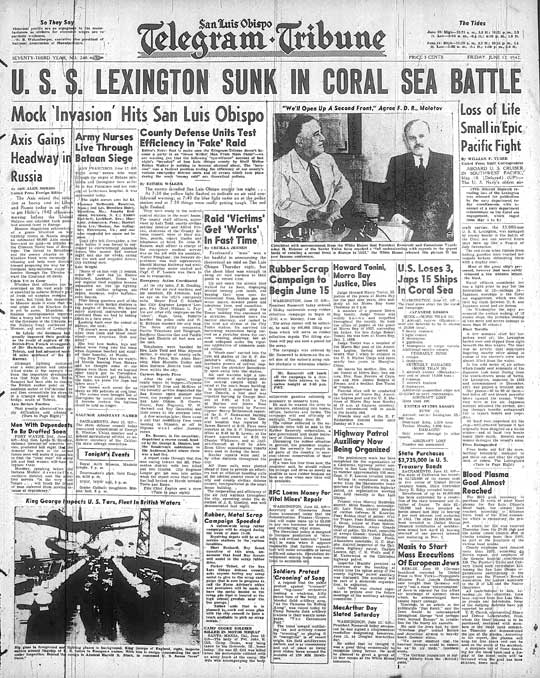 Between the island of New Guinea and Australia lies the Coral Sea, with the Solomon Islands just beyond. While later in World War II, major conflicts would rage in the Solomon’s, the likes of Guadalcanal, few are familiar with the most important sea battle known by the Aussie’s as “The Battle that saved Australia”.
Between the island of New Guinea and Australia lies the Coral Sea, with the Solomon Islands just beyond. While later in World War II, major conflicts would rage in the Solomon’s, the likes of Guadalcanal, few are familiar with the most important sea battle known by the Aussie’s as “The Battle that saved Australia”.
The importance of the Battle of the Coral Sea, which spanned from May 4 through the 8th 1942, is recorded in history as the first carrier versus carrier fight in which the opposing aircraft carriers were about two hundred miles apart and never saw each other. It was the air planes each side launched which delivered the damage and set the stage for future clashes in the Pacific Theater. More importantly, it was the first time US. Forces stopped the Japanese from advancing.
After the successful April 18, 1942 Doolittle Raid on Japan, the Imperial commanders altered their attack plan. Diverting from their original concept to invade India, they decided to expand their perimeter around their homeland and set their sights south, on Australia. With the intent of crippling or eliminating the combined forces of Australia and New Zealand, the Japanese sent an invasion party to Tulagi, in the southern Solomon’s, to build an air base. The next phase was to then establish another base at Port Moresby in Southeastern New Guinea. From this air field their bombers could easily rain death and destruction on Australia.
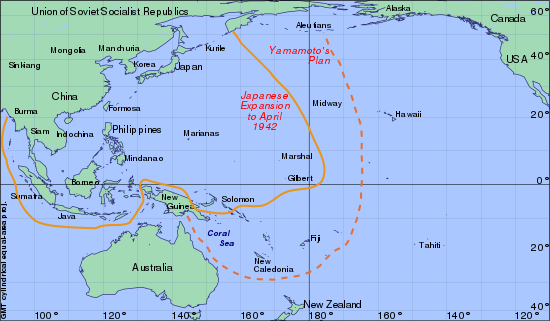
American/Allied code breakers learned of the Nippon plans entitled, Operation MO. Under the command of Rear Admirals Frank Fletcher and Aubry Fitch, aided by a British-led cruiser force, this combined surface force prepared to thwart the Japanese.
On May 3rd, the Japanese invasion easily overtook the defenseless Tulagi.
The battle began to unfold on May 4th as Fletcher hurried his ships toward Tulagi, inflicting damage on the landing and construction parties. Yet, his planes were not able to prevent the establishment of an airfield.
By the 6th, Japanese reconnaissance planes were sky bound and prowling. However, bad weather and misinformation delayed both sides from locating each other.
The 7th saw a fierce, seemingly one-sided battle, with the sinking of the USS Sims and the crippling of the tanker USS Neosho. Americans were able to locate and sink the light Japanese carrier Shoho.
It was the dawning of May 8th that brought the climax, as the two enemies found each other in the waters. Almost at the same time, hundreds of miles apart, the battle took shape. Having the advantage of clear skies, the Japanese took two passes, with direct hits, on the USS Lexington, nicknamed ‘The Ghost,’ or ‘Lady Lex’. While she remained afloat, fires spread out of control on gas vapors, her crew abandoned, and she was eventually scuttled and torpedoed, with a loss of 216 souls.

On March 4, 2018, Microsoft co-founder, Paul G. Allen, discovered the sunken remains of the USS Lexington, one of America’s first aircraft carriers, two miles below the surface, on the bottom of the Coral Sea.
The USS Yorktown which faired better, was able to limp back to Pearl Harbor, and readied for the decisive Battle of Midway in June.
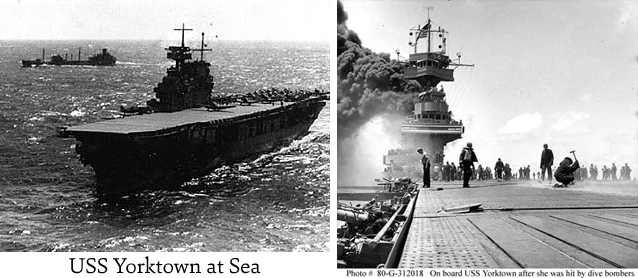
During the battle, while hidden by cloud cover, the American planes located the two Japanese battleships who had played major roles in the attack on Pearl Harbor, the Shokaku and the Zuikaku. US bombs destroyed Shokaku’s ability to launch aircraft, rendering her useless, and the Zuikaku lost so many pilots and planes that she was not able to take part in the upcoming Battle of Midway.
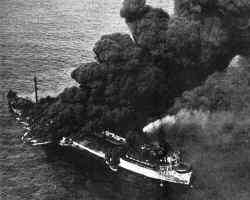
Thus, while the outcome of the battle appeared to be in Japan’s favor, it would prove to be the Americans who struck the deepest blow to the Imperial Japanese Navy, especially with the impending, tide turning Battle of Midway.
One little discussed tragedy of the Battle of the Coral Sea was the fate of 68 sailors who abandoned the burning USS Neosho, lashed life rafts together, only to drift for nine long, foodless, waterless, sun dazed days. Of the 68 who started the journey only two would survive.
Amazingly, three days later after the battle ended, the listing oil tanker the USS Neosho, crippled on May 7th, was spotted by scout planes–still afloat–with the 123 men clinging to her battered hulk and were rescued.
| U.S. Ship | Type | Status | Complement | Killed | Survivors |
| U.S.S. Lexington | Carrier | Sunk | 2,122 | 216 | 1,906 |
| U.S.S. Neosho | Oiler | Sunk | 293 | 168 | 125 |
| U.S.S. Sims | Destroyer | Sunk | 252 | 239 | 13 |
| U.S.S. Yorktown | Carrier | Damaged | 2,919 | 66 | 2,853 |
| Other (estimated) | 20 | ||||
| TOTAL | 5,586 | 709 | 4,897 | ||
|
Table credit Del’s Journey |
|||||
War brings tragedies and miracles. While an estimated 709 young men, many just out of high school, gave up their lives for America during this four-day struggle, the Navy developed new strategies and the importance of the mighty aircraft carrier was etched in history. Airplanes altered combat, especially over vast oceans. Thus, the Pacific Theater, with blue waters as graves, created unique demands in the ever changing face of battle.
And no other battle proved a more poignant forerunner to the new style of naval warfare then the ‘Battle that saved Australia,’ The Battle of the Coral Sea.
To that end, those who fought, died, or returned to tell the tale, should never be forgotten.
Denise Frisino
